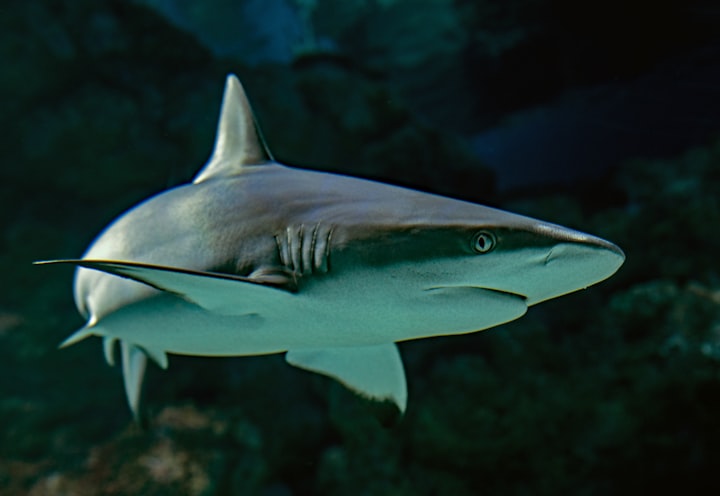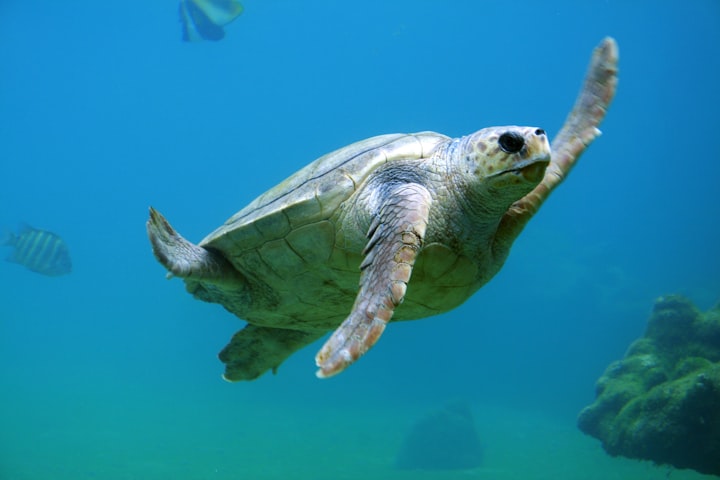Interesting facts about Shark Biology
why they're such a biological marvel

Sharks in some form or another have been in our oceans for up to 450 million years. They are natural predators, with a great diversity amongst them. There are over 500 Species of sharks, and each of them has carved their specialist way of surviving in their native habitat. From extended tails that whip and stun prey, to bodies designed to blend in resulting in the ultimate ambush predators. Sharks are the best at what they do. So why is that? From a biological perspective evolved traits have allowed them to carve their way to the top. So what's so interesting about their biology? Read on and you might learn something new.

1) Sharks have no bones
Sharks are one of the oldest and least changed of all the living back-boned jawed creatures. Yet because their skeletons are made of cartilage much of their early fossil record is poor.
Cartilage is a rubbery tissue that forms the framework for bones to ossify (harden) upon. It's why babies have rubbery legs when they begin to walk, as the bones haven't fully ossified around the cartilage cores. Our ears and noses are cartilage, which lacks bone, but still, support the soft structures we use to hear and smell.
Although the oldest of these shark-like scales is 480 million years old, the oldest complete shark fossil, Cladoselache, is only about 360 million years old.
Older but still incomplete fossil sharks are known, such as the Doliodus from Canada, around 4000 million years old. Yet the simple truth is that most sharks of this age are known only from isolated teeth or scales.
A shark's cartilaginous skeletons are much lighter than true bone, sharks also have large livers filled with low-density oils which coupled with a cartilaginous skeleton allows for a drag resistant, lightweight, buoyant body able to move at great speeds.

2) Most sharks have good eyesight
Most sharks can see well in dark lighted areas, have fantastic night vision, and can see colours. Sharks eyes are almost on completely different sides of its head, allowing for a nearly 360-degree field of vision.
While a sharks eyesight is extremely good, they do have two major blind spots, which are right in front of the snout and right behind the head. Sharks can only see about 15 meters (50 feet) ahead, but the sense of sight is only important to a shark once it has locked onto its prey.
A sharks eye is similar to the eye of other vertebrates, with many parts that we'd recognise: lens, retina, iris and cornea. Yet one feature of a shark's eyes is the tapetum lucidum, which allows sharks to see in low light conditions. The tapetum lucidum is located behind the retina and is made up of mirrored crystals. Then the light goes through the retina and hits the crystals, it's reflected onto the retina. Cats also have this feature and that's why both cat and shark eyes appear to 'glow' in the dark. In a shark though, the tapetum lucidum is about two times more effective at reflecting light than it is in cats. Due to this tapetum, a shark can see about 10 times better than a human can in dim light

3) Electroreceptor organs
Sharks have small black spots near the nose, eyes, and mouth. These spots are the ampullae of Lorenzini - special electroreceptor organs that allow the shark to sense electromagnetic fields and temperature shifts in the ocean.
These electroreceptors are jelly-filled tubes that open on the surface of a sharks skin. Inside, each tube ends in a bulb known as the ampulla. The jelly in the tube is highly conductive which allows the electrical potential at the pore opening to be transferred to the ampulla at the base of the tube. Voltage differences across the membrane lining each ampulla then cause nerves to be activated, sending signals to the shark's brain.
These specialist electroreceptors are mostly used to capture prey and are extremely useful in detecting electrical fields generated by the heartbeat of shark prey. This ability has allowed sharks to become the top ocean predators, by allows sharks to detect prey that would otherwise be hidden from predators e.g. finding prey hidden in the sand by detecting their generated electrical fields.

4) Sandpaper skin
Sharkskin feels exactly like sandpaper because it is made up of tiny teeth-like structures called placoid scales, also known as dermal denticles. These scales point towards the tail and help reduce friction from water when the shark swims by channelling it thought grooves. Also, the shark's skin is so rough that contact with it is can injure prey. All of the spines pint to the tail so it would feel smooth if you moved your hand from head to tail, but the other way and you'd be looking at micro-cuts, or even gashes, depending on which shark you're 'petting'.
The scales the have the same structure as a tooth with an outer layer of enamel, dentine and a central pulp cavity. Unlike the scales of bony fish (ctenoid scales) that get larger as the fish grows, placoid scales stay the same side. As the shark grows, it just gowns more placoid scales.

5) Tonic immobility
Tonic immobility is a reflex that causes a temporary stat of inactivity (paralysis) in an animal, often called animal hypnosis. It can be induced in sharks and rays by stimulating the tiny sensory pores located on the snout.
Tonic immobility is often used by researches when handling sharks to subdue them. This technique allows researchers to minimise the sharks struggling and reduces the possibility of injury. When the shark is gently turned on their back, it's thought to disorientate them, causing them to enter the sate. The shark's muscles relax, and their breathing becomes deep and rhythmic. It's not known why sharks enter this state, and it has been observed to occur naturally without human induction. Some scientists suggest it may be related to mating, but no one is sure.
6) Secondary respiration system
Some species of sharks have a second way of pulling water into their respiratory system. Most sharks have to keep swimming to pump water over their gills which enables them to breathe. Yet a few species have another way. A spiracle which is located just behind the eyes of some sharks supplies water directly to the shark's eyes and brain. Bottom-dwelling sharks, like angel sharks and nurse sharks, use this second method to breath while hiding on the seafloor. Alternatively its most often used for respiration when the shark's mouth is being used for eating.

7) Diversity of reproductive modes
Quite interesting for a group of species, is that sharks exhibit a great diversity when it comes to their method of reproduction. There are oviparous (egg-laying) species, and there are also viviparous (live-bearing) species. Oviparous species lay eggs that develop and hatch outside of the mother's body with no parental care after the eggs are laid. Viviparous raise their young within them, similar to how mammals do.
About the Creator
Bradley Knight
Grown on the British Isles, exploring beyond.
Marine Ecologist by trade, Scientific Illustrator and Communicator by hobby.






Comments
There are no comments for this story
Be the first to respond and start the conversation.